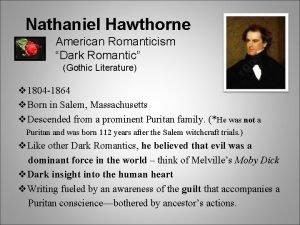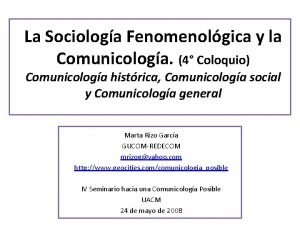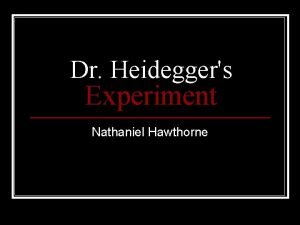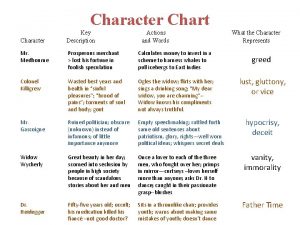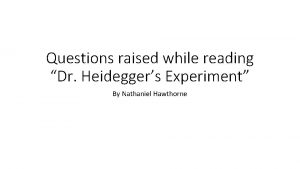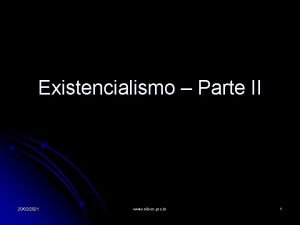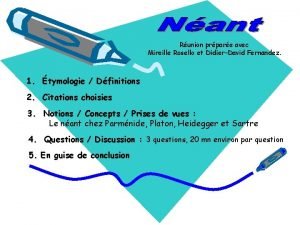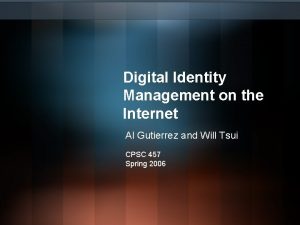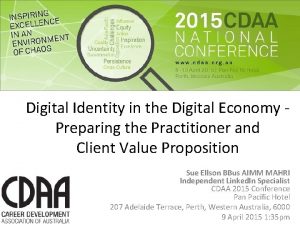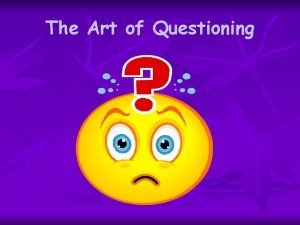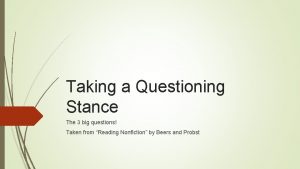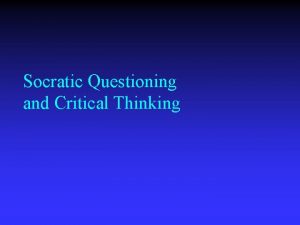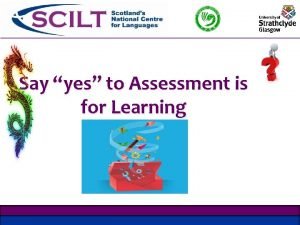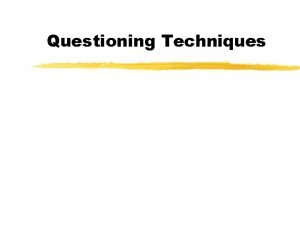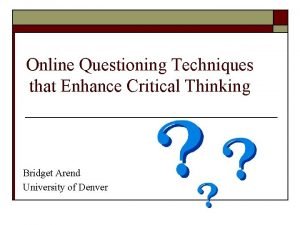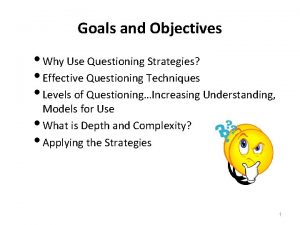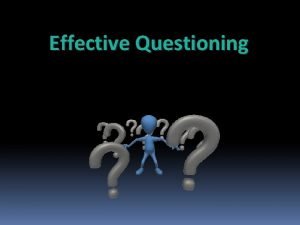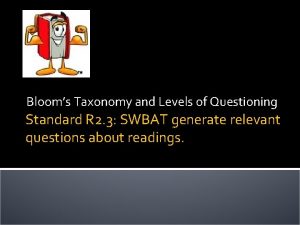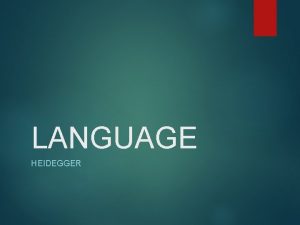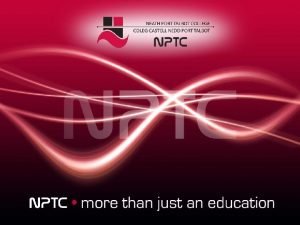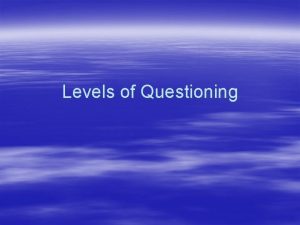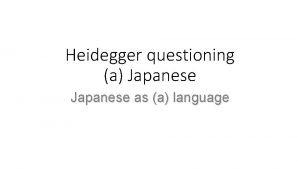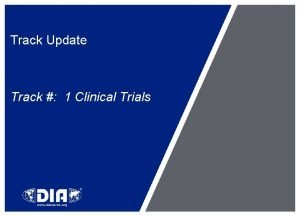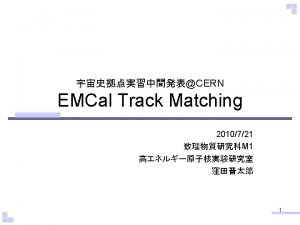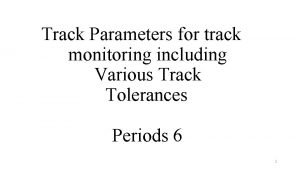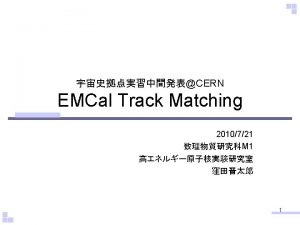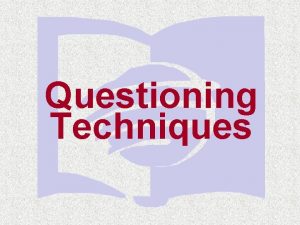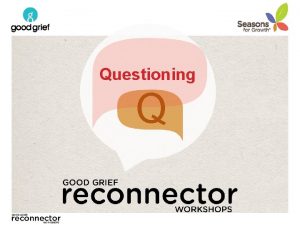My Digital Identity Heidegger Questioning Track one these












































- Slides: 44

My Digital Identity

Heidegger - Questioning • Track one - these slides • Track two - notes on identity • Track Three - Montreal

Four slides on Technology

Swirling • Gary Brown - “ 50 percent of the college population is "swirling" now; students are taking courses from multiple colleges and universities…” • http: //www. campustechnology. com/articl es/58872_1/

The Web 2. 0 e-Portfolio • Gary Brown: “we should start thinking not so much in terms of an e. Portfolio but, instead, in terms of a personal learning environment (PLE). ” • http: //www. campustechnology. com/articl es/58872_2/

Personal Learning Environments • Web 2. 0 (AJAX, REST) based • Distributed Content • Interactive / Collaborative the nature of an enquiry

Personal Learning Environment

Identity • http: //www. downes. ca/post/12

Establishing Identity… • Formerly - an ontological problem produce the body and you have the identity • Today - an epistemological problem the internet has abstracted the body

The Nature of the Question: • No longer ‘who am I? ’ • But rather: ‘who goes there? ’ • It has become the requirement to prove who you are • There is no way to ‘step forward and be recognized’

Definitions • Identification - the assertion that I am a certain person • Authentication - the verification that I am who I say I am

Identification • Requires a system of self-verification memory • My identification therefore includes the history of who I am • Memory of self is central to identity amnesiacs ask first “who am I? ” and not “what is the capital of France? ”

Naming • A name is seldom sufficient to establish identity • Presumption of uniqueness • Need eg. Social Insurance Number • Other ID, transient and permanent school number, phone number, PIN

Tokens • Physical entities carrying a record of my name (so I can remember it) • Typically a combination - eg. Name, Credit Card Number, Expiry Date, Security Code • Encodings in language, photo, magnetic stripe

Authentication • Is impossible without identification • There must be ananswer to the question ‘who am I? ” before we can answer ‘Who are you? ’

Identity Claims • ‘I am P’ when I am P • ‘I am P’ when I am not P

Presentation of Tokens • Are typically the same tokens we use to self-identfy • Nothing inherently in the token presents false claims • Eg. - false ID, borrowed PIN number, etc.

Claiming • when you present your driver's license to the police officer, that's an identity claim. When the police officer compares the photo on the license with your face, that's authentication. • Nothing in the claim prevents it from being a false claim

Authentication, Again • No system of authentication succeeds • by 'succeeds' we mean here 'proving beyond reasonable doubt that "I am P" is true. ’ • ‘Succeeds’ vary - standard depends on the consequences

Testimony • Authentication is usually the testimony of a third party • Eg. , a government, a bank, an employer, who attests that you say who you say you are • Typically enforced through some tamper-proof token • But this simply creates two problems because, how does the authority know who you are?

The Token • The problem of authentication thus resolves to this: the presentation of an artifact that is in some way knowably unique to the person and which also attests to the truth of the statement that "I am P. " • But there is no such token (other than the body)

Proxies • ID-based authentication • Device-based authentication - processor based, trusted computing • Epistemological identification (answer questions) • But: proxies work only if the owner does not want to give up the proxy (the credit card, the computer, etc)

Motivation • Once upon a time, “a man’s word is his bond” - no more - there is no ‘word’ • The cost was diminished standing in the community • Today the cost is… what, access to a bank account? • Even biometrics relies on there being a cost

The True Nature of Trust • self-identification can be trusted if it is in the interest of the self to self-identify accurately. • When sufficiently motivated, I can prove my own identity to my own satisfaction. • Logically, no authentication system is more secure than self-identification.

Privacy and Control • The advantage of self-identification is that the control of my identity is in my won hands • The question of privacy is a question of trust: can the user trust the service provider to respect the user's rights with respect to personal data? • So: in fact the question of trust is the opposite to what we assume it is

Stealing data • Governments and companies share data • People also steal data • This will happen so long as it is in their interest to do so

Ownership • When the right to assert who you are is controlled by someone else, your identity is owned by someone else, and a person whose identity is owned does not own any of the attributes commonly associated with identity: attribution of authorship, ownership of houses, permission to drive, residency, citizenship, the right to vote, and more.

Identity, in the end… • Needs to be understood from the perspective of objectives • Not how do you prove who you are, but rather • How do I maintain control over my own identity • As Terry Anderson might say - how do I manage my own presence? The ontology of being = presence in space and time

Self-identification Using Open. ID Your identity is a web address You prove your identity by proving you can modify the address You choose your provider, your level of security It remains in your interest to secure your site

Profiles http: //www. downes. ca/post/41750

Resources What are resources? - the RDF answer Data and Metadata

Describing Resources Is essentially the ascription of having or not having a property This requires a vocabulay of possible properties The use of this vocabulary in turn presupposes not only a set of logical relations ('is a type of', 'contains') but also a specific vocabulary generally agreed upon by a linguistic community.

Being ‘Right’ The expectation is that the description will be ‘right’ Can mean ‘true’, ‘accurate’ or even ‘useful’

Multiple (Conflicting) Descriptions Goodman: “Metatags, as many in the industry are aware, were an early victim, succumbing to the opportunism of web site owners. ” There is no guarantee inherent in the RSS format - or any XML format - that the information placed into the file will be accurate. Categorizations will be needlessly broad. 'Interactivity' will always be 'high', even if the resource is a static web page.

Fundamental Concepts Vocabularies - for different resource types Authorship - attribution, multiple authors Distribution - multiple sites

Identifiers The premise of the Handle system Why the system fails

Models Uninstantiated descriptions of resources (aka ‘roles’ in another world) And inheritance… (a theory of types in metadata)

Types of Metadata Bibliographical Technical Classification Evaluative Educational Sequencing & Relational Interaction (Trackback, eg) Rights

Three Types of Metadata • First party - creator (I) • Second Party - user (You) • Third party - Other (It)

The Lifecycle of a Resource Is like the lifecycle of a human

Generating Resource Profiles The metadata distribution network Aggregators and harvesting Partial ‘views’ of Networks Layers of filtering (Projected Metadata)

Harvesting vs Federation based on trust and authentication Tightly integrated applications, not loose Problems: Vulnerable to malfunction or attack Interoperability difficult, ‘Plugfests’ needed Limited range of data Single point of view

Interoperability is not - and cannot be - a property of the resource. With respect to the meanings of words, interoperability is a property of the reader (after all, a word such as 'cat' does not inherently contain its own denotation; it must be interpreted, and against a conceptual background, a denotation derived).

Conclusion? Profiles - like identity - belong to the user There is not and cannot be a single ‘view’
 Asean tourism strategic plan
Asean tourism strategic plan Graphic organizer with the aims of la liga filipina
Graphic organizer with the aims of la liga filipina Questioning god after death loved one
Questioning god after death loved one Dark romantic meaning
Dark romantic meaning Mapa conceptual existencialismo
Mapa conceptual existencialismo Colonel killigrew traits
Colonel killigrew traits Mr. medbourne character analysis
Mr. medbourne character analysis What does the water symbolize in dr heidegger's experiment
What does the water symbolize in dr heidegger's experiment Heidegger
Heidegger Pourquoi y a t il quelque chose plutôt que rien heidegger
Pourquoi y a t il quelque chose plutôt que rien heidegger Auf diesem wege bedeutung
Auf diesem wege bedeutung A.backtoschool
A.backtoschool One empire one god one emperor
One empire one god one emperor One one one little dog run
One one one little dog run One king one law one faith
One king one law one faith Byzantine definition
Byzantine definition One ford
One ford See one do one teach one
See one do one teach one One price policy
One price policy Twelfth night speeches
Twelfth night speeches Studiendekanat uni bonn
Studiendekanat uni bonn Digital identity services
Digital identity services Linked in
Linked in Digital identity
Digital identity Barclays local insights
Barclays local insights Questioning and discussion techniques in the classroom
Questioning and discussion techniques in the classroom Have you ever wondered questions and answers
Have you ever wondered questions and answers Numbers and stats signpost examples
Numbers and stats signpost examples Critical thinking is driven by
Critical thinking is driven by Aifl techniques
Aifl techniques Convergent questioning
Convergent questioning Kathleen cotton classroom questioning
Kathleen cotton classroom questioning Powerful questioning
Powerful questioning Virtual questioning skills
Virtual questioning skills Reading stance
Reading stance Non fiction signposts
Non fiction signposts Level 3 question examples
Level 3 question examples Kathleen cotton classroom questioning
Kathleen cotton classroom questioning Conclusive research
Conclusive research Purpose of questioning
Purpose of questioning Costa level of questioning
Costa level of questioning Observing and questioning
Observing and questioning Blooms levels of questioning
Blooms levels of questioning Sales questioning techniques
Sales questioning techniques What does the bible say about questioning
What does the bible say about questioning



